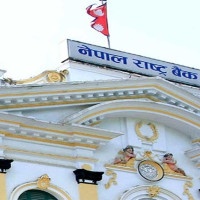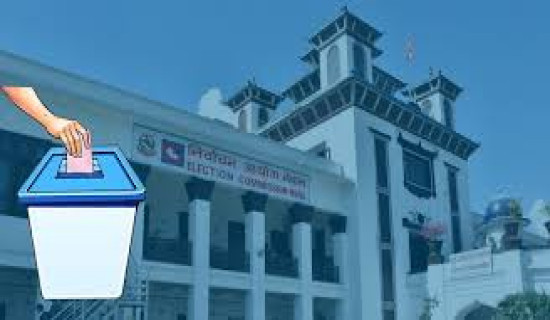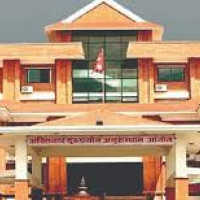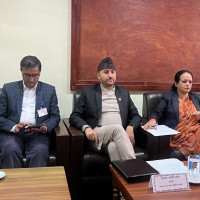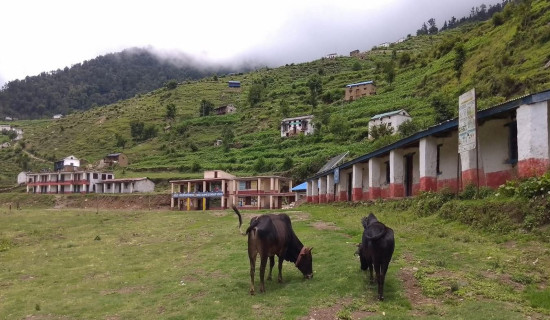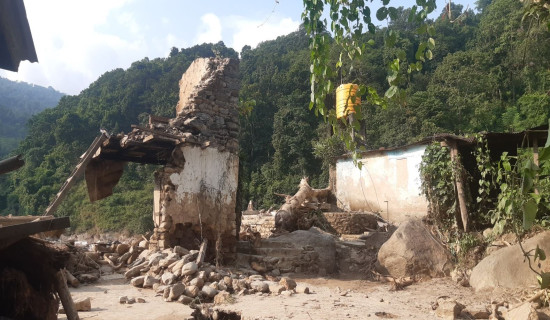- Tuesday, 16 December 2025
Tap Social Remittances For Growth
Rooted in human behaviour and individual needs, internal and external migration play a defining role in shaping the socio-economic fabric of all nations. History reveals the fact that the main drivers behind migration in the early days were trade, spiritual quest, resource acquisition and warfare - known as the valued characters of society.
In ancient times, the frequent travel of Nepali people to Tibet and India was mainly for trade, education and religious pursuits. The Sugauli Treaty of 1816 marked a turning point for cross-border movement between the two countries, Nepal and India. The treaty opened a conducive environment for two-way mobility among people residing in border areas. Apart from this, the treaty institutionalised the recruitment of Nepali citizens into the British-Indian Army and legitimised large-scale external labour migration. Since then, tens of thousands of Nepali nationals, especially from hill areas and border villages, started migrating to India in search of employment in agriculture, security and construction-related works.
Outbound migration
It is not a one-sided instance. Nepal also welcomed Indian nationals to provide their experienced services in agriculture, trade, construction work and industrial establishments. From the 1990s onwards, marking a substantial shift in the international labour migration trajectory of the country, Nepalis increasingly migrated mainly to Gulf countries in search of better employment opportunities that helped to bridge the gap of labour shortage abroad. The spiral effect of the ten-year-long Maoist conflict (1996-2006), which bred instability and displacement of the local population, led to a rapid surge in outbound migration.
Human migration is like water; wherever it finds space, it flows. It can neither be stopped nor fully controlled. The evolution of human civilisation itself was developed on the foundation of migration. Indus Valley Civilisation (3300-1300 BCE) evolved due to the influence of Indo-Aryan migration, which contributed to the flourishing of the Vedic civilisation in South Asia. The national census of 2021 clearly vindicates a sensitive scenario, with 2.19 million Nepalis having migrated, accounting for nearly 7.4 per cent of the total population. Most of these migrants enter the international labour market with sweet dreams.
The driving force behind such dreams is none other than the desire to earn money and secure a better life, because of the low employment opportunities in the country. Many Nepali people live in hardship, relying on agricultural work that is insufficient to meet basic needs of health, education, and food. The slow pace of development of the industrial sector has created in an abysmally low number of job opportunities, which cannot bridge the gap between demand and supply. Apart from this, climate-induced exodus, such as erratic rains, floods, and droughts, also further worsened the agricultural livelihoods, which compel many youths to leave the country.
The dream of earning more money often does not come true in real life, especially for women who venture mainly to Gulf countries as housemaids. Due to their low level of vocational skills and reliance on unauthorised channels to reach their destinations, they become highly vulnerable. In this condition, they are exploited physically, financially and mentally at their worksites. The exploitation begins not just at the workplace, but from the very outset of their journey, as many of them are forced into debt even before departure. Once they arrive at the designated companies, they often do not get the same jobs as initially assured. As a result, their dreams are shattered.
In the above context, the 'visit visa' has become a legal loophole for human traffickers, prompting and fostering corruption and placing an additional burden on migrant workers, both men and women. However, those who enter the international labour market through an authorised government channel face a relatively lower risk of exploitation. Despite enduring such awful conditions, Nepali migrant workers continue to contribute immensely to the national economy, accounting for around 25-27 per cent of Nepal's GDP as a crucial economic backbone.
In contrast, those who migrate to Western countries for education and later become permanent residents rarely send remittances back to Nepal. Their contribution to the national economy is insignificant. Considering this, these contributors to the national economy must be honoured by the State through intervention in pre-departure training, healthcare, robust legal protection and diplomatic support. They should not be regarded merely as workers; rather, they must be recognised as bread and butter earners to the nation's livelihood.
Social capital
Peggy Levitt coined the word social remittances to describe the ideas, practices, knowledge, skills, values and social capital which migrants bring back to their homelands. Social remittances are intangible and non-monetary in nature. Once the migrants come back to their country, they transfer their social capital to their communities. What they learn abroad can significantly influence local cultures and aspirations. Returning Nepali migrants from Japan and South Korea often bring different sets of cultural values and practices, whereas those coming back from undemocratic countries their ideas and values may be different. How to reconcile these diverse influences presents a complex challenge.
In Nepal, in-depth studies have not been done on the impact of social remittances. However, social remittances have contributed to the transfer of skills and knowledge to the local communities, which have helped to create self-employment in agriculture and in establishing small-scale industries. At the same time, their double-edged nature of cultural dissonance and erosion of indigenous practices can lead to unprecedented consequences. The returnees may face alienation if they adopt foreign values and religions, resulting in cultural clashes that fracture the social structure.
(The author is a former secretary of Nepal government.)




